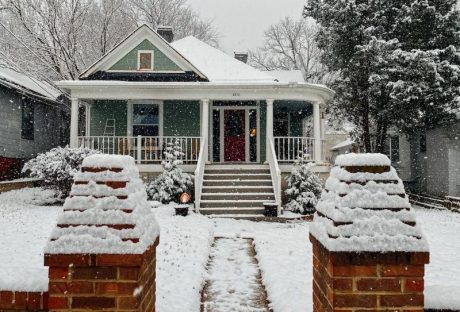Tag: emergency evacuation planning

Why You Need A Cold Weather Evacuation Plan
Whether you already have an evacuation plan or are just starting to think about making one, it’s necessary to have different plans for different scenarios. Think about it: does your evacuation plan assume that there will be blue skies and warm temperatures during an evacuation for a fire? A thorough evacuation plan takes many different situations into account. You should be aware of the different types of evacuations that occur, from natural disasters such as forest fires, landslides, tornados, and house fires. And yet, often, people forget to plan for adverse weather conditions, like having to wait in a safety zone in frigid temperatures, pouring rain, or a snowstorm or having to leave through emergency exits with heaps of snow or ice obstructing the way. Checkout Three Prime Reasons You Need A Cold Weather Evacuation Plan: If you already have an evacuation plan and are prepared with emergency tools like the Evacuscape evacuation chair, you’re already ahead of the game, and winterizing your plan won’t require too many tweaks. If you don’t yet have any evacuation plan in place, you can make your cold weather plan at the same time as your warm weather plan. Here are some of the key reasons why it’s essential that you plan for cold weather evacuations. 1. Higher Risk of Fires Between fireplaces, candles, and increased use of heating systems, there’s much more opportunity for fires in the home to occur. The National Fire Protection Association (NFPA) says that house fires occur more often in winter than in any other season. The increased risk must be taken into account during emergency planning for everyone’s safety. Plus, you can take the opportunity to ensure your practice has good fire safety tips. 2. Increased Chance for Severe Weather Natural weather-related disasters come at all times of the year. Winter brings freezing cold temperatures and all sorts of precipitation – from snowstorms to ice storms. Storms can last for days, and power outages often occur, leading to further safety issues. It’s essential to know the different scenarios that can occur. For some, it may be safer to stay put indoors, whereas, for others, you may need to leave your home. You May Also Check: All The Colors You Should Wear This Winter 3. Provides More Opportunities for Safety Planning Considering different conditions allows you to prepare accordingly. From simple and easy things like keeping a warm coat or jacket available to quickly grab on your way out to keep you warm while waiting outside to advance planning, like making sure exits are clear of snow and ice and making sure windows that might be used are easily opened when the cold and ice start happening. The whole point of emergency evacuation planning is to ensure people know how to evacuate safely and are familiar with the plan enough that they can remember it in the event of an emergency when feelings of panic are likely to occur. One thing you will probably never hear someone say is that they regretted taking safety precautions like planning an evacuation plan for their family and going over it every once in a while, to ensure everyone is familiar with it. Making another evacuation plan for cold weather allows you the opportunity to go over your plan, talk to your family about it, and keep it fresh in everyone’s minds to keep your family safe and protected this winter. Read Also: How to Maintain a Bright and Beautiful Garden During WinterPrepping Your Vehicle For Winter Weather Driving7 Daring Party Drinks to Try This Winter
READ MOREDetails















